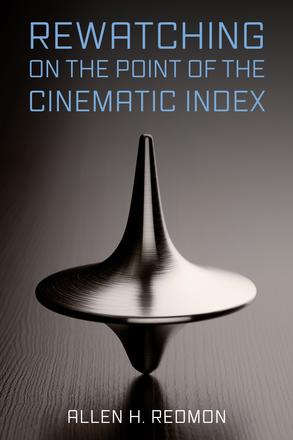
Rewatching on the Point of the Cinematic Index
A groundbreaking exploration of the ways trauma, memory, and visual representation intertwine with adaptation studies
Description
Rewatching on the Point of the Cinematic Index offers a reassessment of the cinematic index as it sits at the intersection of film studies, trauma studies, and adaptation studies. Author Allen H. Redmon argues that far too often scholars imagine the cinematic index to be nothing more than an acknowledgment that the lens-based camera captures and brings to the screen a reality that existed before the camera. When cinema’s indexicality is so narrowly defined, the entire nature of film is called into question the moment film no longer relies on a lens-based camera. The presence of digital technologies seemingly strips cinema of its indexical standing.
This volume pushes for a broader understanding of the cinematic index by returning to the early discussions of the index in film studies and the more recent discussions of the index in other digital arts. Bolstered by the insights these discussions can offer, the volume looks to replace what might be best deemed a diminished concept of the cinematic index with a series of more complex cinematic indices, the impoverished index, the indefinite index, the intertextual index, and the imaginative index. The central argument of this book is that these more complex indices encourage spectators to enter a process of ongoing adaptation of the reality they see on the screen, and that it is on the point of these indices that the most significant instances of rewatching movies occur.
Examining such films as John Lee Hancock’s Saving Mr. Banks (2013); Richard Linklater’s oeuvre; Paul Greengrass’s United 93 (2006); Oliver Stone’s World Trade Center (2006); Stephen Daldry’s Extremely Loud and Incredibly Close (2011); and Christopher Nolan’s Dunkirk (2017), Inception (2010), and Memento (2000), Redmon demonstrates that the cinematic index invites spectators to enter a process of ongoing adaptation.
Reviews
"This is a highly engaging book that makes a compelling case for why opening up the index could be a useful path forward for cinema and media studies, adaptation studies, and other humanities disciplines."
- David T. Johnson, chair of the English Department at Salisbury University
"This engagingly written volume proposes a new, useful, and potentially transformative theoretical idea: the cinematic index, one that links together several ongoing discussions about the nature of cinema in the digital era and the active role of the viewer to provide a compelling argument about the inherently creative act of watching. In compelling readings of movies based in both historical realities and fiction, this book explores the stakes involved in advocating for the creative potential of the cinematic index for our understanding of trauma as a personal, national, and filmic event as well as for understanding adaptation not as a subfield of cinema studies but as a metaphor for the cinematic experience in general."
- John Alberti, chair of the Department of English at Northern Kentucky University